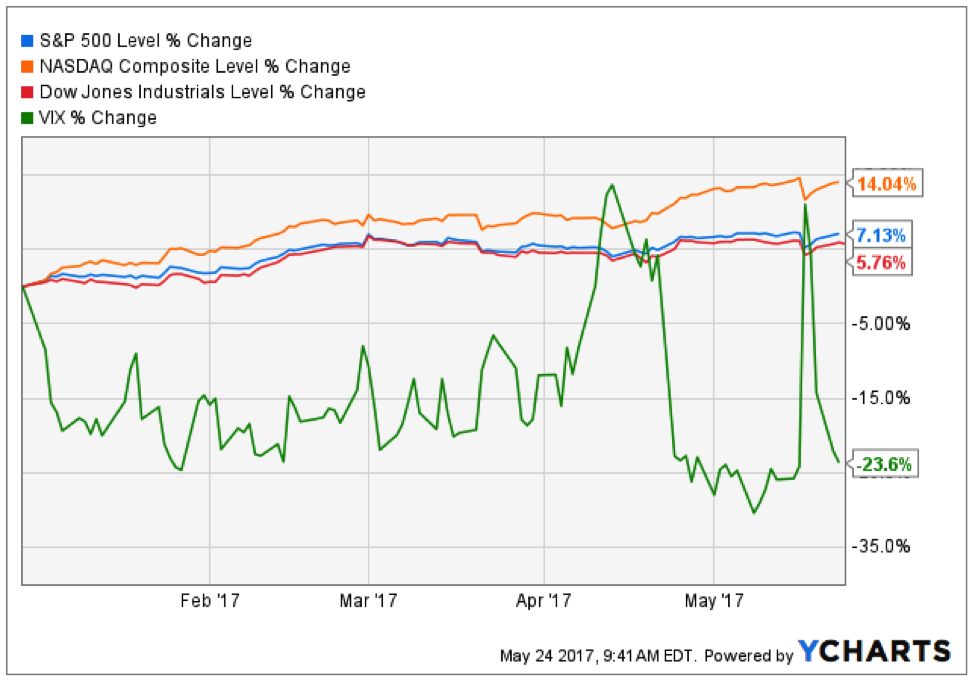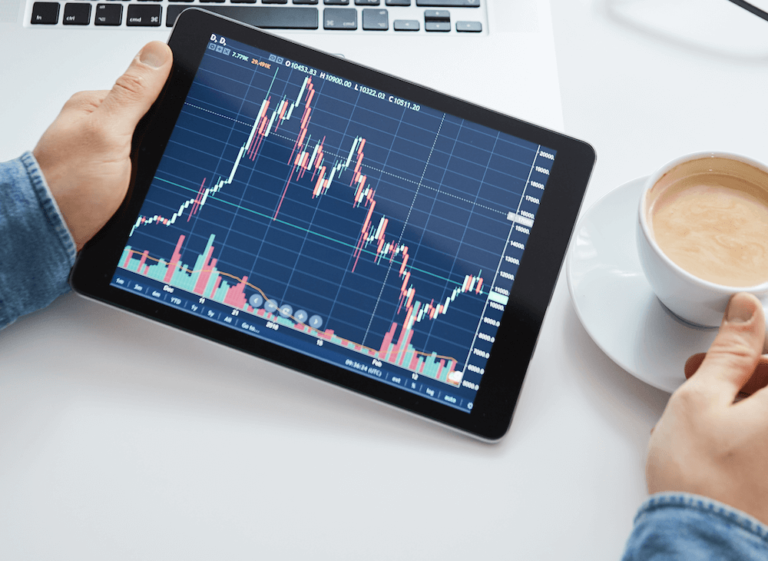In the buildup to the 2016 U.S. Presidential elections, Wall Street analysts made it very clear that a Trump presidency could be bad for the market. Wall Street was particularly worried about Trump’s tendency to trigger market uncertainty with unguarded speech and brash actions. However, Wall Street eventually warmed up to the idea of a Trump presidency in the understanding that many of his proposed economic plans and policies could be positive for the market.
The chart below shows how the major U.S. market indexes have fared under President Trump in the year-to-date period. The chart also shows how the market fear gauge (VIX index) has fared in the same period. From the chart, you’ll observe that the S&P 500 has gained 14.04%, the NASDAQ Composite has gained 7.13%, and the Dow has gained 5.76% this year.
Conversely, the chart shows that the market fear gauge is down with the VIX declining a massive 23.6% in the year-to-date period. This seeks to provide insight into why the level of market volatility is low.

The pro-Trump case for low volatility
President Trump used to be a political outsider – he has deep roots in business and investors think he is on top of his economic policy game. The fact that Trump has triggered decent gains on Wall Street since taking the oath of office has also earned him some goodwill from investors. In fact, Trump holds the record for the fourth-best performance within the first 100 days in office for a U.S. president. It appears that investors are convinced that Trump is good for Wall Street.
Trump has promised several tax reforms that hints an overhaul (though unlikely) of the tax system. However, his proposed tax cuts will benefit businesses and investors. Hence, investors are less worried about the day-to-day activities on Wall Street – they are not moving their portfolio in response to short-term moves because they more focused on the long game.
The anti-Trump case for low volatility
Critics of president Trump have maintained that investors should not rejoice because market volatility is low under Trump’s administration. Brandon Roberts, an analyst at Lionexo observes that “market volatility is good for traders in particular and a low market volatility environment turns trading into a boring and unprofitable venture.”
Some critics have also maintained that the huge decline in market volatility can be linked to the calm before the storm and that the market will soon be thrown into an unprecedented storm of volatile confusion. The submission of these critics is that Trump is still a vocal bull in the China shop and that he will eventually trigger a wave of events that could crash the markets.
Thirdly, some folks on Wall Street are not impressed by the apparent decline in market volatility because it hints at an underlying level of pent-up market uncertainty. Market watchers have explained that Trump makes it somewhat hard for Wall Street to know what to expect from Washington. The presidency has a way of making statements and reversals that makes it hard to pinpoint how the government will act on any issue. Hence, the lack of volatility suggests that investors are bidding their time until they are able to better understand the signals from Washington.

